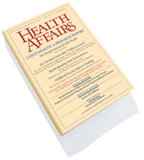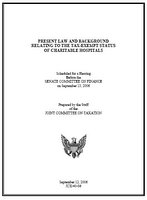 From the excellent Health Lawyers Weekly (AHLA member benefit), here's the table of contents from the September 29 issue:
From the excellent Health Lawyers Weekly (AHLA member benefit), here's the table of contents from the September 29 issue:Top Stories
- IOM Issues Recommendations For Improving FDA Post-Market Drug Surveillance -- The Food and Drug Administration’s (FDA's) ability to oversee the safety of prescription drugs after they hit the market is undermined by a number of systemic deficiencies--including chronic under funding, organizational problems, and inadequate data--that require far-reaching changes to address, according to a new report by the Institute of Medicine (IOM) of the National Academies. Full Story
- Health Insurance Premiums Rose More Than Twice As Fast As Inflation In 2006, Report Finds -- Premiums for employer-sponsored health insurance rose an average of 7.7% in 2006, more than twice as fast as workers' wages (3.8%) and overall inflation (3.5%), according to the 2006 Health Benefits Survey released September 26 by the Kaiser Family Foundation and the Health Research and Educational Trust (HRET). Full Story
Articles & Analyses
- CMS Announces Revisions To The Emergency Medical Treatment And Active Labor Act, By Adrienne Marting and Raquel Gayle, Powell Goldstein LLP
Current Topics
- DHHS
1. OIG Issues FY 2007 Work Plan
2. Leavitt Names Norwalk Acting CMS Administrator- Food and Drug Law
Homeland Security Conferees Agree To Limited Drug Importation Provision- Fraud and Abuse
1. OIG Approves Charitable Organization’s Proposed Grants To Financially Needy With Certain Diseases To Defray Costs Of Medicare Premiums
2. Update
3. U.S. Court In Pennsylvania Allows Qui Tam Case To Go Forward, Says Specifics Of False Claims Not Necessary
4. OIG Approves Two Cities’ Exclusive Contracts For Non-Emergency Inter-Facility Ambulance Transport Services
5. DHHS OKs Drug Maker’s Pharmaceutical Assistance Program For Financially Needy Part D Enrollees
6. State MFCUs Report Over $1 Billion In Recoveries In FYs 2004 And 2005
7. Tenet Executes Five-Year CIA With OIG- Health Policy
1. Group Makes Recommendations For Better Healthcare System
2. House Ways And Means Committee Approves Bill To Increase Use Of
HSAs- HIPAA
U.S. Court In Nebraska Finds Physician Cannot Pursue Claims Against Hospital For Disclosing His Drug/Alcohol Treatment- Hospitals and Health Systems
1. Montana Supreme Court Finds Clinic Owes No Duty To Victims Of Car Crash Caused By Patient Seen At Clinic
2. Emergency Department Crowding Common, CDC Study Finds- Managed Care
Illinois Supreme Court Strikes Down Percentage-Based Fee-Splitting Provision In Healthcare Company’s Participating Provider Agreements- Medical Malpractice
1. Indiana Appeals Court Finds Psychiatric Patient’s Claims Not Subject To Medical Malpractice Statute
2. Florida Appeals Court Upholds Jury’s Finding That Physician's Negligence Caused Elderly Patient’s Death Following Car Accident- Medicare
1. U.S. Court In Indiana Rejects Hospitals’ Bid For Retroactive Adjustment Of Their Outlier Payments
2. Federal Judge Enjoins CMS From Collecting Incorrect Medicare Part D Payments
3. CMS Overpaid IRFs Almost $12 Million, OIG Finds- News in Brief
DHHS Partners With States To Promote Long Term Care Planning- Quality of Care
1. NCQA Finds Health Plans' Quality Gains Continue, Says Accountability Is Key(c) 2006 AHLA. Reprinted with permission
















